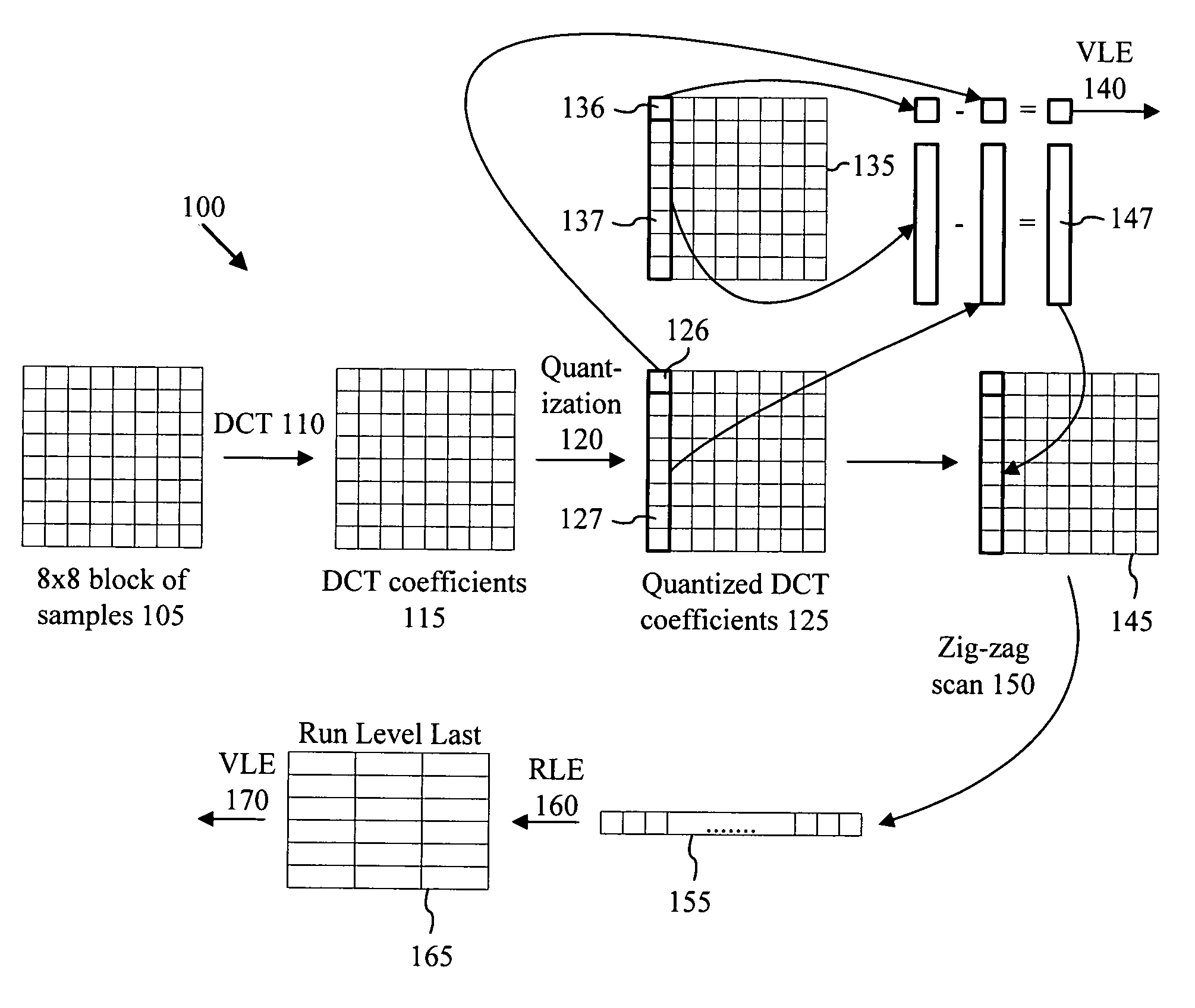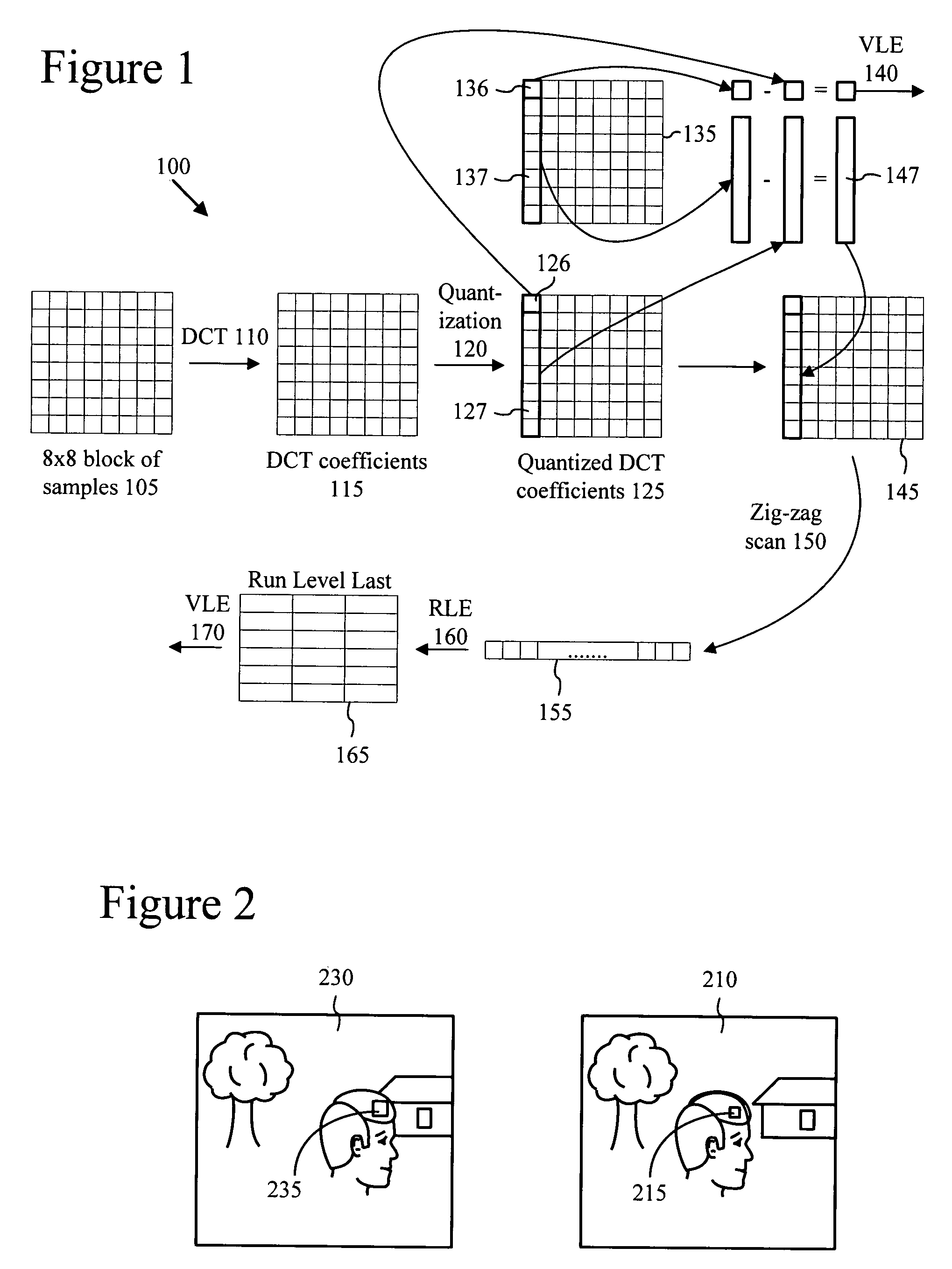Regions of interest for quality adjustments
a quality adjustment and region technology, applied in the field of regions of interest for quality adjustments, can solve the problems of lossless compression, lossy compression, and reduced bit rate due to video complexity, so as to reduce the bit rate of information, remove redundancy, and reduce the effect of fidelity
- Summary
- Abstract
- Description
- Claims
- Application Information
AI Technical Summary
Benefits of technology
Problems solved by technology
Method used
Image
Examples
Embodiment Construction
[0073]The present application relates to techniques and tools for quality adjustments (e.g., quantization adjustments in video pictures) using regions of interest. In various described embodiments, a video encoder incorporates techniques for encoding video, and corresponding signaling techniques for use with a bitstream format or syntax comprising different layers or levels. Some of the described techniques and tools can be applied to interlaced or progressive frames.
[0074]Various alternatives to the implementations described herein are possible. For example, techniques described with reference to flowchart diagrams can be altered by changing the ordering of stages shown in the flowcharts, by repeating or omitting certain stages, etc. As another example, although some implementations are described with reference to specific macroblock formats, other formats also can be used.
[0075]The various techniques and tools can be used in combination or independently. Different embodiments impl...
PUM
 Login to View More
Login to View More Abstract
Description
Claims
Application Information
 Login to View More
Login to View More - R&D
- Intellectual Property
- Life Sciences
- Materials
- Tech Scout
- Unparalleled Data Quality
- Higher Quality Content
- 60% Fewer Hallucinations
Browse by: Latest US Patents, China's latest patents, Technical Efficacy Thesaurus, Application Domain, Technology Topic, Popular Technical Reports.
© 2025 PatSnap. All rights reserved.Legal|Privacy policy|Modern Slavery Act Transparency Statement|Sitemap|About US| Contact US: help@patsnap.com



